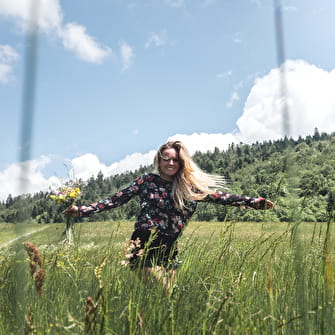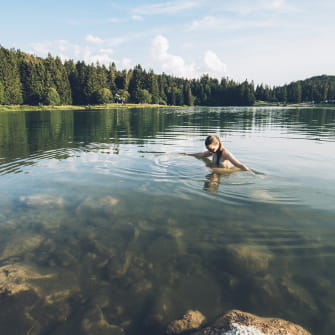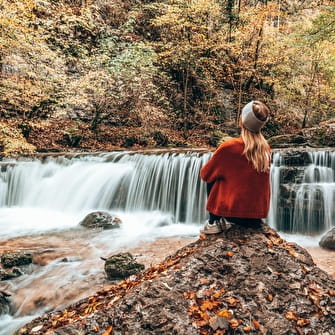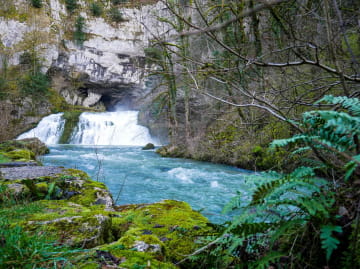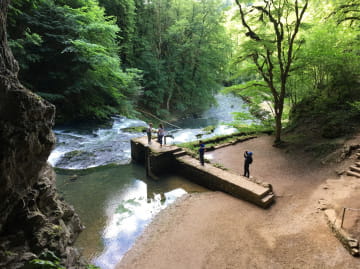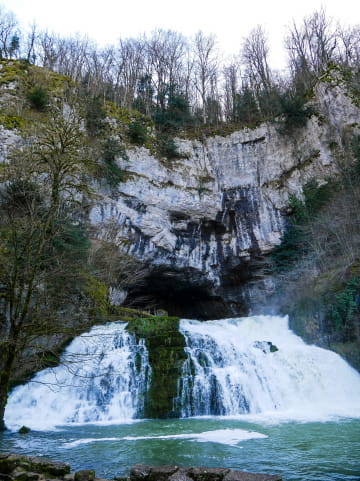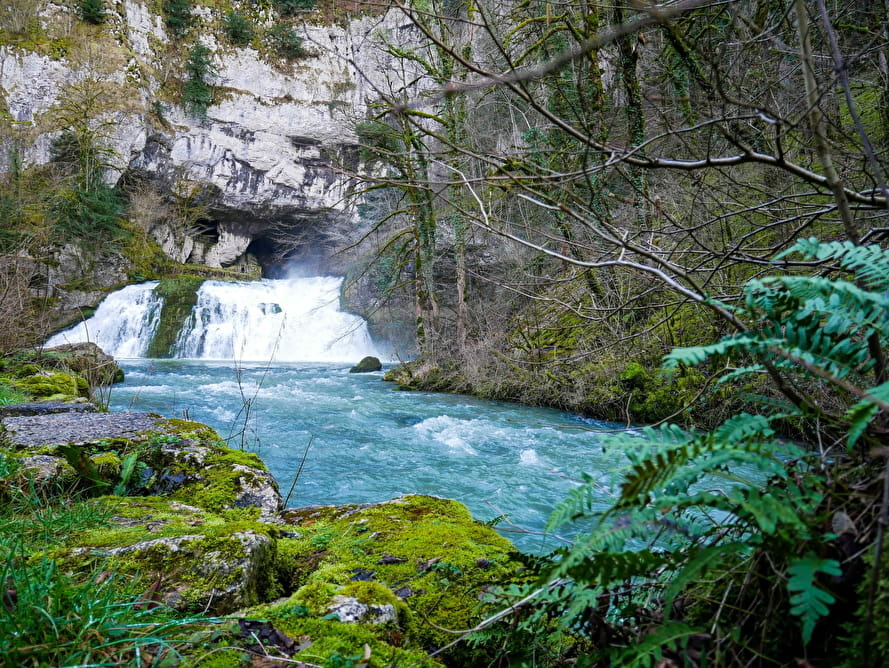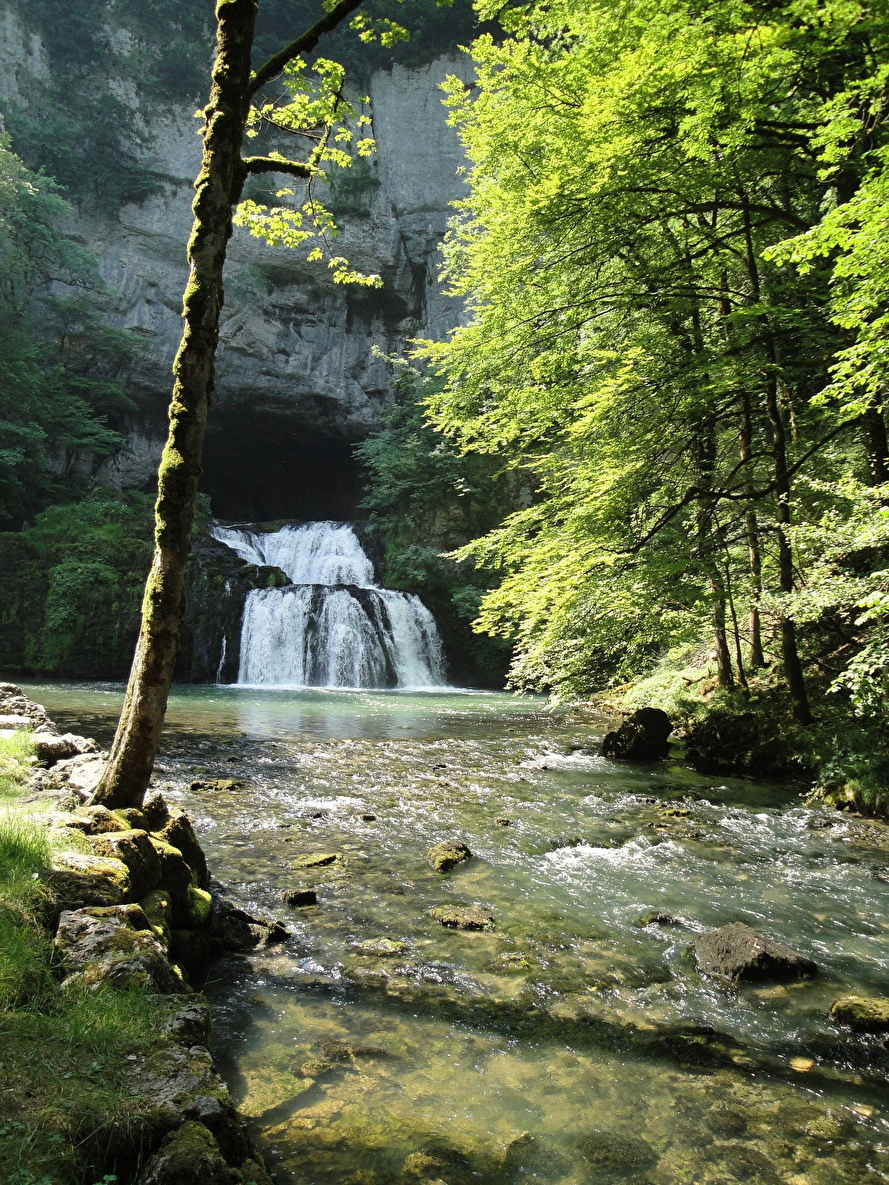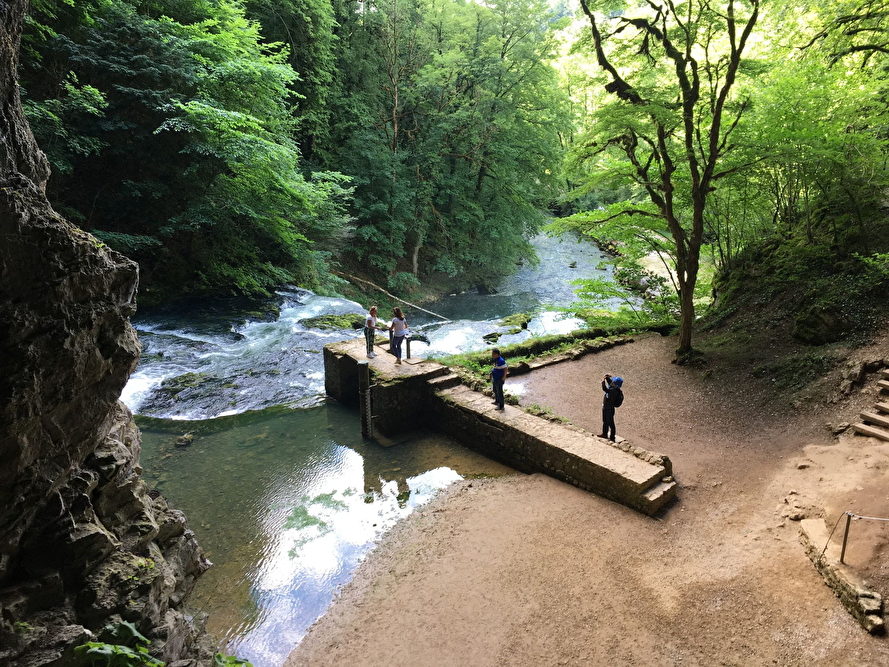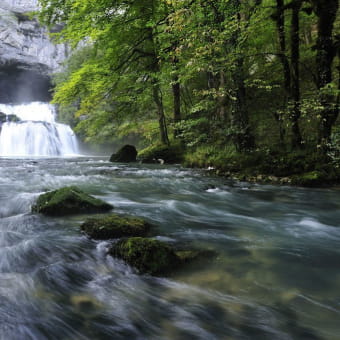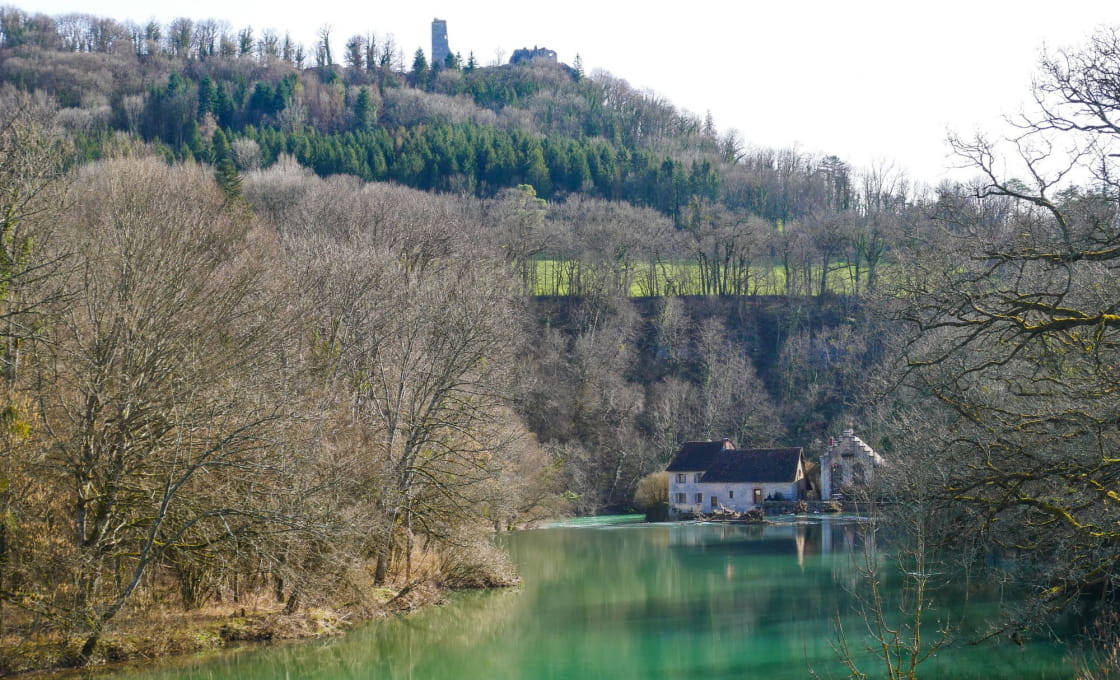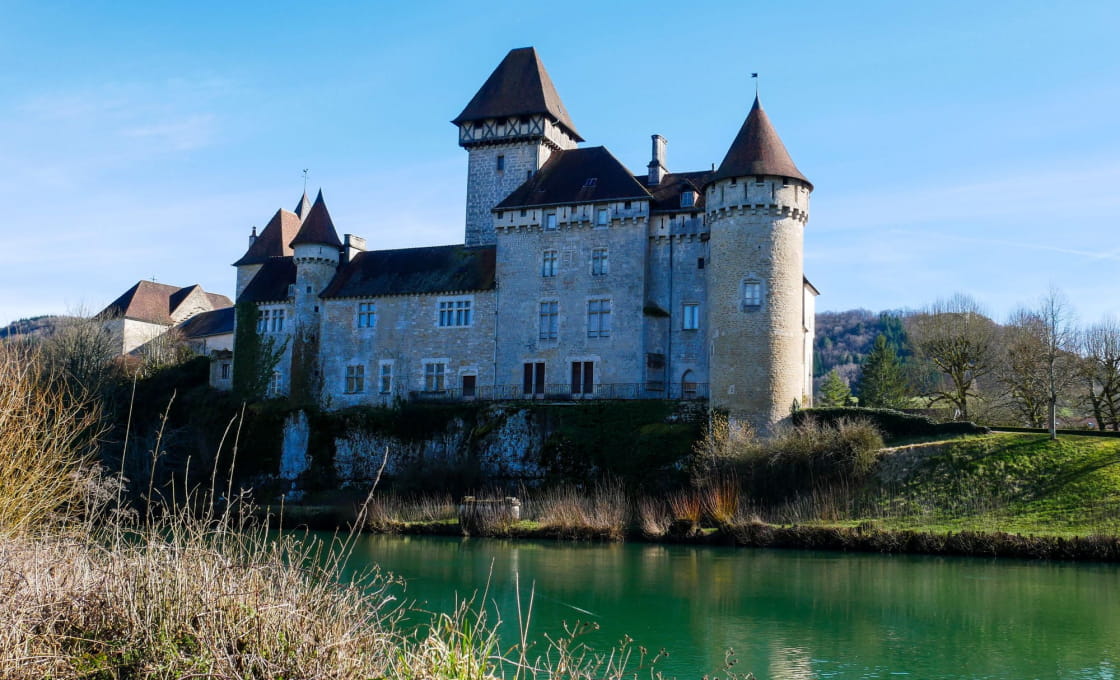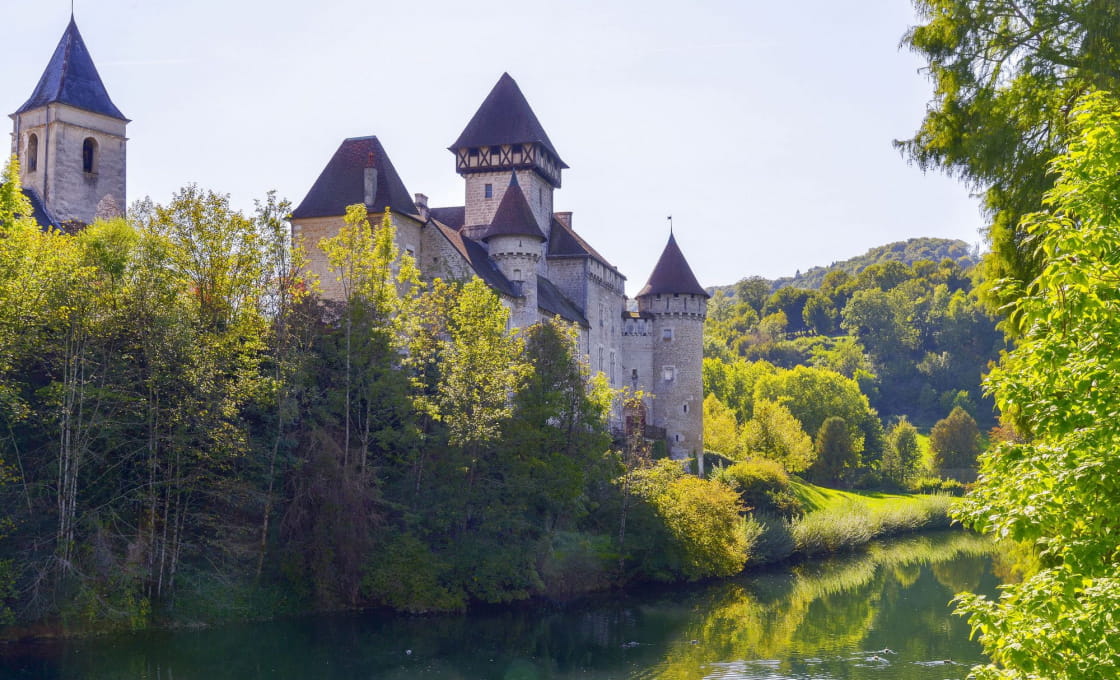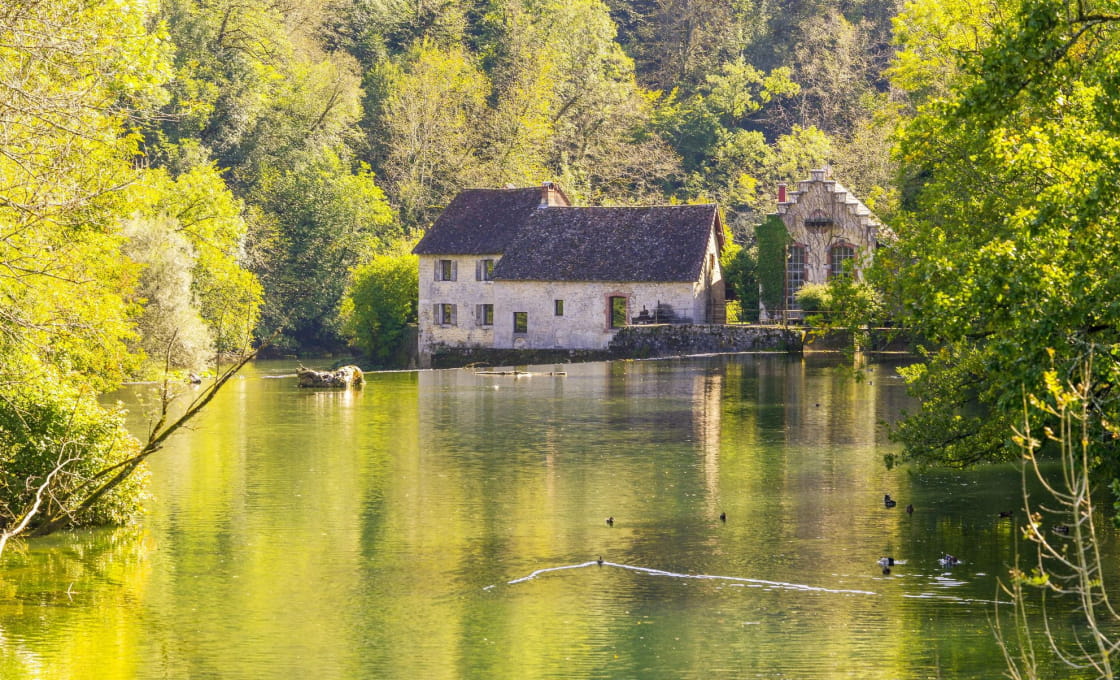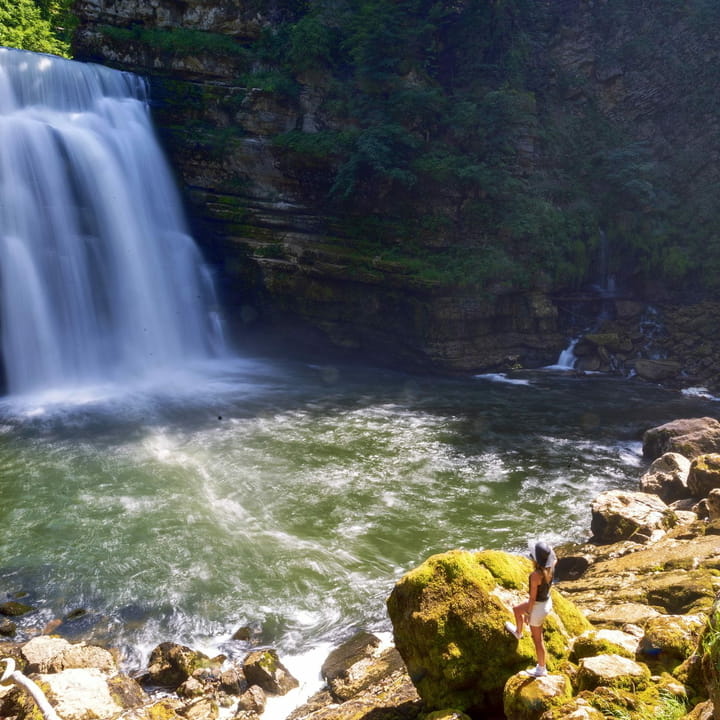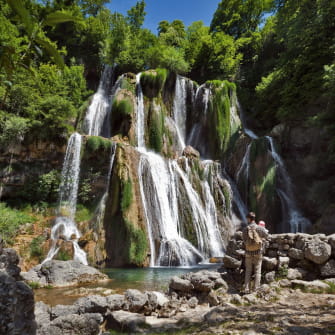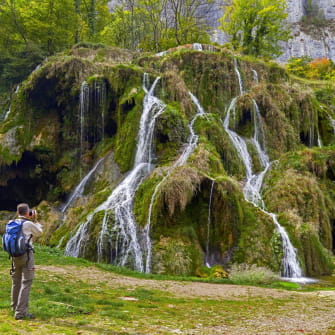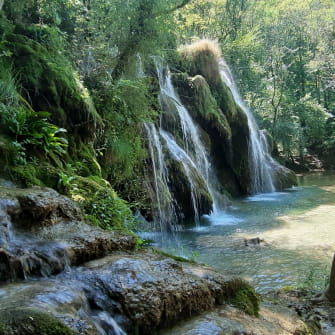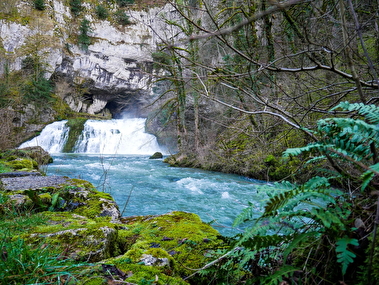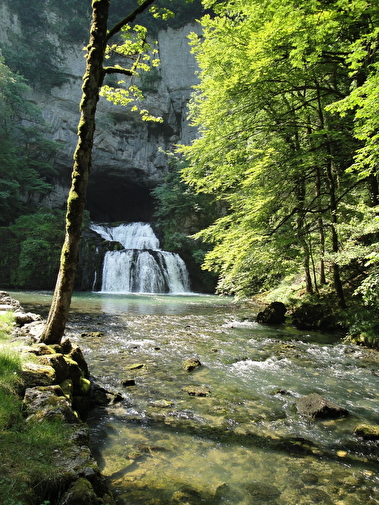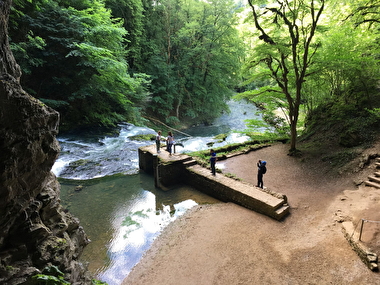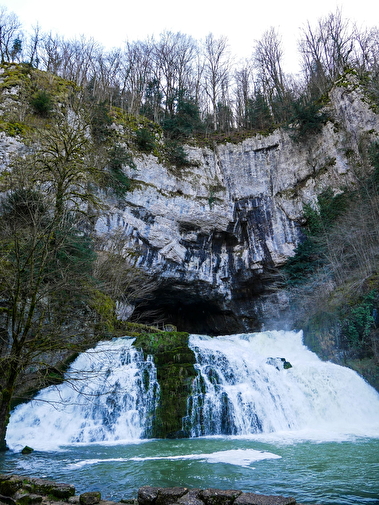In 1899, the owner of the mill wanted to tap the water of the Lison and thus stop the flow of the waterfall. The residents of the nearest village, Nans-sous-Sainte-Anne, rallied behind their MP, Charles Beauquier, and after two lawsuits eventually won their case. Immediately afterwards, the first environmental protection law was passed. Following enactment of this "Beauquier Act", the source of the Lison became the second listed site.
Source of the River Lison: a walk to discover the waterfall and other gems
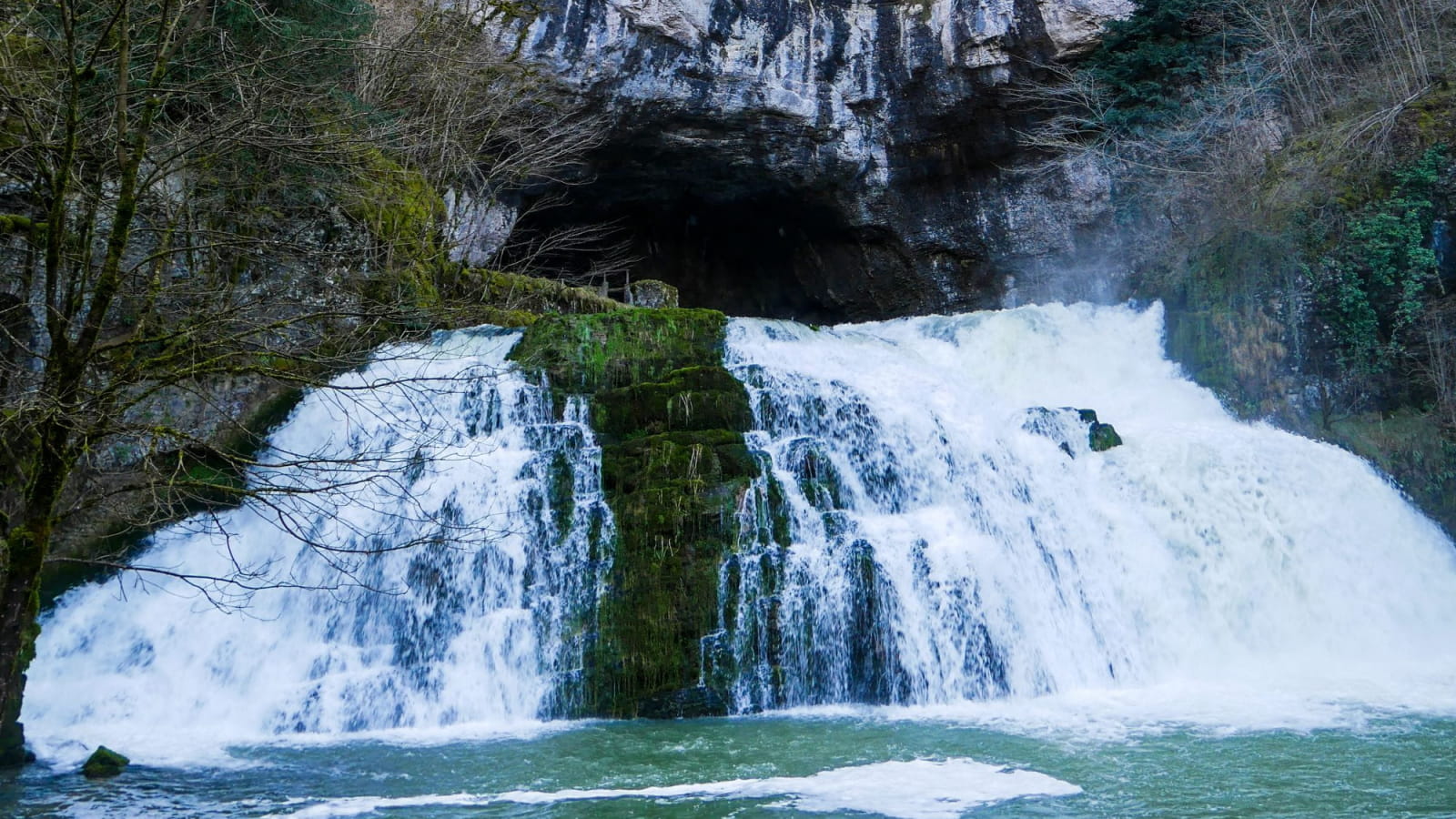
Do not miss this chance to discover the source of the River Lison, where the waterfall flows in a real peace haven surrounded by forest. And while you're there, why not walk or drive to the charming village of Nans-sous-Sainte-Anne, very close by? Where there's a source there's a river! The Lison valley is ideal for a walk along the riverbank in a very natural setting with a scattering of villages, châteaux and castles.
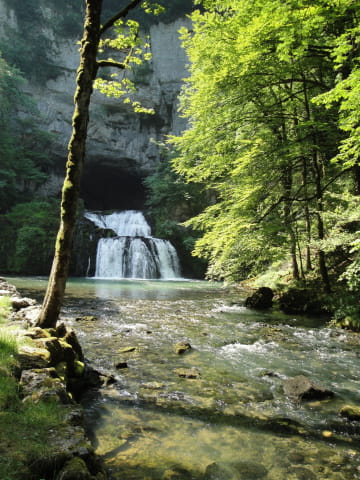
Walking to the Source of the Lison
We call it the Lison source but it is also an impressive waterfall that emerges from a cave below an immense rock face.
In both summer and winter, walkers come to soak up the atmosphere of secrecy and the wildness of the site. The source is barely 200 metres away from the car park, and the short walk plunges you into a romantic, dreamlike setting.
In winter, the mineral decor and bare trees give the site a rather melancholic quality. In summer, you'll be moved by its sheer beauty and harmony, and may even be tempted to take a dip. Caution! Not only is swimming prohibited here, but the water temperature is around 8 degrees Celsius!
A number of waymarked trails, ranging from 15 minutes to 2 hours, invite you to explore. A chance to get a closer look at the chasms, caves and other geological curiosities that are specific to the Jura Mountains.
Take inspiration
A source, a trial, a law
Getting to the source of the River Lison
A refreshing peace haven less than an hour away from Besançon
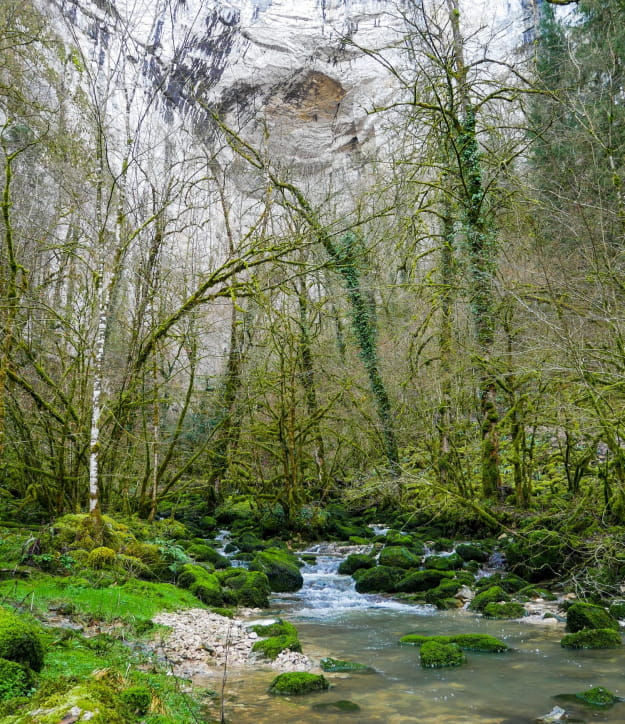
A stone's throw from the Source
The Saracen cave
A stone's throw from the source, take the footbridge across the River Lison and follow the picturesque riverbank. After climbing for a few minutes, you'll find yourself face-to-face with an immense natural porch carved into the rock face. This is the Saracen cave. Rather impressive, don't you think?
The village of Nans-sous-Sainte-Anne
Visitors come to see not only the village where the novelist, Louis Pergaud (author of "The War of the Buttons") spent his holidays, but also the cutting tool museum. Why not stay a little longer and treat yourself to a night in a cabin on stilts?
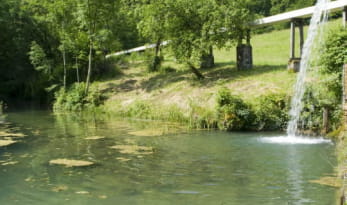
The cutting tool museum
Of the latter, the workshop still remains where farming tools were made until 1969. Still in a good state of repair and excellent working order, the site is open to visitors. A perfect opportunity to learn about an industry run by hydraulic power.
Musée de la taillanderie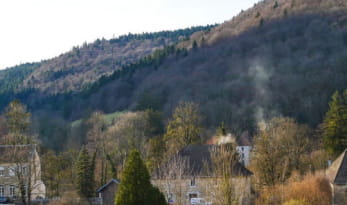
The village
From the source, you can walk or drive to nearby Nans-sous-Sainte-Anne. Nestled at the bottom of the valley, this adorable little village used to be famous for its earthenware production and, later, its metal tool factory.
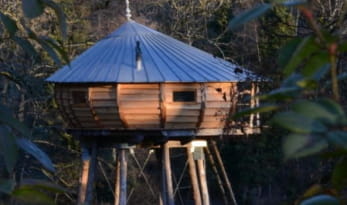
Cabins on stilts
And why not prolong your stay with a night in a stilted cabin? Childhood dreams can come true thanks to these 5 cabins perched 5 to 12 metres above the ground in the magical and oh so revitisalising setting of the grounds of the Château Marquise Mirabelle.
Réserver une cabaneExploring further: the Lison Valley
Rolling landscapes, country lanes, unspoilt nature and, above all, some beautiful places to stop along the way when you visit the Lison Valley.
By car, simply follow the winding Lison River for a leisurely drive of about fifty kilometres. Besides the Lison's famous source, you'll also be able to admire:
- the Medieval castle of Cléron where the gardens can be visited
- the beautiful landscape of the Miroir de Scey, a lake as beautiful in real life as in the painting by Gustave Courbet.
- The walk on the paths of Courbet



